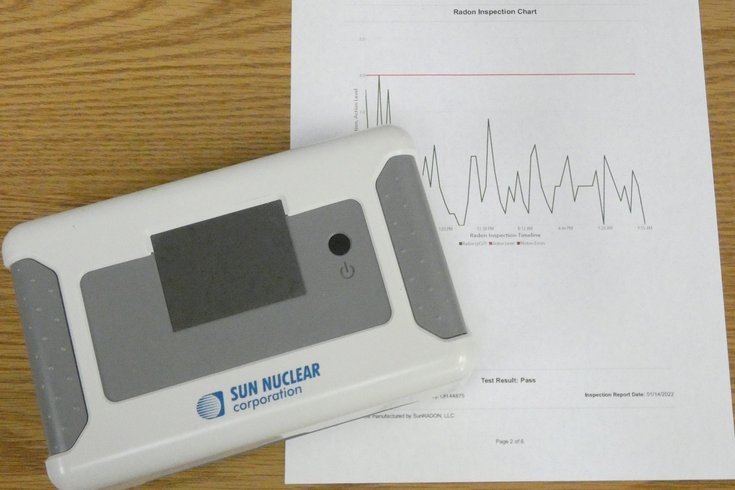
January 03, 2024
 Gere Goble/USA TODAY NETWORK
Gere Goble/USA TODAY NETWORK
Radon, an odorless, colorless gas, is the second-leading cause of lung cancer in the United States and only can be detected by using special test kits, like the one above.
One of the most serious health threats in Pennsylvania is also among the easiest to miss.
Radon, an odorless, radioactive gas that can cause lung cancer, is present at dangerous levels in nearly 40% of homes in the Keystone State, according to a recent report on lung cancer in the U.S. released by the American Lung Association.
The same report showed that radon is present in about 10% of homes in New Jersey.
Radon is so prevalent in Pennsylvania that Gov. Josh Shapiro declared January as Radon Action Month in an effort to increase awareness and encourage residents to have their homes tested for the gas.
"Pennsylvania has one of the nation's most serious radon problems," said Kevin Stewart, the American Lung Association's director of environmental health. "High levels of radioactive radon gas have been found in every county but most places in the commonwealth remain under-tested, so this isn't something that should be taken lightly."
Most Pennsylvania counties – including Bucks, Chester, Delaware and Montgomery – are considered by the U.S. Department of Environmental Protection to be among those with the highest potential for elevated radon levels. The threat in Philadelphia is considered low, but the EPA stresses that all homes should be tested radon.
South Jersey is at moderate or low risk for high radon levels.
As part of its campaign to publicize its report, the American Lung Association is partnering with the Pennsylvania Department of Environmental Protection to offer a limited supply of free radon testing kits to people living in the state. Residents can request a free kit on the nonprofit's website. Free radon test kits also are available to New Jersey residents.
Radon is the second-leading cause of lung cancer in the United States, topped by smoking tobacco. The gas is believed to be responsible for about 21,000 lung cancer deaths in the U.S. each year, according to the National Lung Association.
Radon is a naturally-occurring, radioactive gas that can be released from soil, rocks and water as a result of the decay of uranium. The gas can enter homes and other buildings through cracks in their walls, floors and foundations. Over time, radon that gets trapped inside manmade structures can build up and eventually reach levels at which it can impact human health, most notably by causing cancer.
Radon often goes undetected due to its invisible, odorless nature. The only way to know if radon is present in one's home is to use a testing kit designed to detect the presence of the gas in the air. If a building is found to have 4 or more picoCuries of radon per liter of air, that space is considered dangerous, according to standards set by the EPA.
If a building is found to contain dangerously high levels of radon, experts recommend that people hire a professional to seal any cracks and install a radon mitigation system that can help circulate the gas outside the building and away from the lungs of its inhabitants.